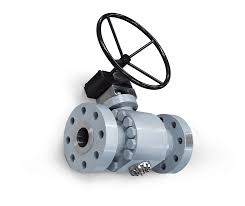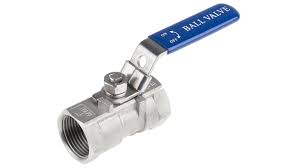Classification of Ball Valves

The Introduction of Ball Valves
Ball valves are a type of industrial valve that have become widely used across various industries due to their unique design and performance characteristics. A ball valve is a quarter-turn valve that uses a spherical or ball-shaped disc to control the flow of media through the valve.
fish plate weld
dn flange dimension
The basic components of a ball valve
- Ball: The spherical or ball-shaped disc that rotates 90 degrees to open and close the valve. The ball has a bore or hole that aligns with the valve’s inlet and outlet ports when the valve is open.
- Seats: The sealing surfaces that the ball rotates against, typically made of soft materials like PTFE or rubber, to provide a tight seal when the valve is closed.
- Body: The housing that encloses the ball and the seats, providing the structural integrity and flow path for the media.
- Stem: The shaft that connects the ball to the valve’s external handle or actuator, allowing the operator to rotate the ball to open or close the valve.
- Packing: The sealing components that prevent leakage around the stem, such as O-rings or gaskets.
The key features and advantages of ball valves
- Tight shut-off: Ball valves can provide a near-absolute seal when closed, making them suitable for critical shut-off applications.
- Compact design: The simple quarter-turn operation and spherical ball design allow ball valves to have a compact and space-saving layout.
- Ease of operation: Ball valves can be easily operated manually or automated with various actuation mechanisms, such as electric or pneumatic actuators.
- Versatility: Ball valves are available in a wide range of materials, sizes, and end connections, making them suitable for a variety of media and applications.
- Reliability: Ball valves are generally known for their reliable performance and long service life, with minimal maintenance requirements.
According to the structure
1. Floating ball valve
The ball of the ball valve is floating. Under the medium pressure, the ball can produce a certain displacement and press tightly on the sealing surface of the outlet end to ensure the sealing of the outlet end. The structure of floating ball valve is simple and its sealing performance is good, but the load of working medium bore by the ball is all transmitted to the outlet sealing ring, so it is necessary to consider whether the sealing ring material can withstand the working load of the ball medium. This structure is widely used in medium and low pressure ball valves.
2. Trunnion mounted ball valve
The ball of the ball valve is fixed and does not move under pressure. Fixed ball valves are equipped with floating seats. Under the pressure of medium, the seats move to make the sealing ring tightly press on the ball to ensure the sealing. Bearings are usually installed on the upper and lower shafts of the ball, with small operating torque, suitable for high-pressure and large-diameter valves. In order to reduce the operating torque of ball valve and increase the availability of sealing, oil-sealed ball valve has appeared in recent years. Special lubricating oil is injected between sealing surfaces to form an oil film, which not only enhances the sealing performance, but also reduces the operating torque. It is more suitable for high-pressure and large caliber ball valve.

According to the pressure
High pressure ball valve, medium pressure ball valve and low pressure ball valve;
According to the type of flow channel:
Full bore ball valve, Reduced bore ball valve;
According to the channel position:
Straight through type ball valve, three way type ball valve, right angle type ball valve;
According to the temperature:
High temperature ball valve, normal temperature ball valve, low temperature ball valve, ultra-low temperature ball valve;
